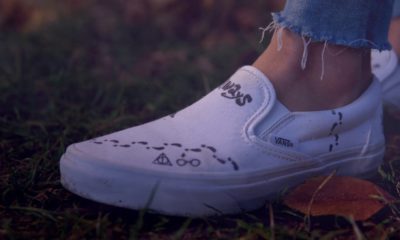Health
Peek At The World’s Guide To The Many Contrasts Of The Cat Breed

Around the globe, you will find over 100 identified breeds of cats. Some were bred in the wild, simply randomly, in a naturally specified location, or are the result of human-selective breeding to instill a particular shape, feature, quality, color, or distinct character trait.
The favored domestic cat that so many cat parents rescue into their homes in the multiples today descends from the original wildcats common throughout Central Asia, Europe, and Africa. From their ancestors derives the beautiful colorings, patterns, and quality of the coats. Read the numbers of cat breeds around the world here.
Cat Breeds From Around The World
If you are lucky enough to travel the globe, you will have the fortune of seeing a wide variety of cat breeds unique from your home country. Many of us are accustomed to the cats that we see commonly and find it fascinating to believe others are living among us, though it would be a peculiar site compared to what is our norm.
** The Tabby
Despite what one might believe, “tabby” is not a recognized breed of cat. The term is actually in reference to the coat pattern. Regardless of markings or coloring, all modern world felines have a tabby gene that the African wildcat passed down.
Even if your cat shows a solid shade, if you peer closely, a pattern might appear before you, such as one of these below:
- The Classic: The flanks will display a pattern of swirls with wide striping.
- The Ticking: You will see this on the legs, head, and tail, appearing as soft flecks in those areas.
- The Spotting: The legs and tail will show striping, while the body will display spots.
- The Mackerel: Running the course of the spine down the flanks onto the tummy, you will see thin, parallel striping.
- The Patch: You’ll also see this referenced as tortoiseshell. This kitty will offer a blend of all the categories. You can find colorings like blacks, golds, reds, and oranges, especially with breeds like the British Shorthair, Persian, and Cornish Rex.
Tabbies will have an “M” marking on their head for breeds like the American Curl or Siberian. For these, colors can range from silver, brown, cream, reds, and black. Go to this link https://www.thegreatcat.org/10-most-expensive-cat-breeds-in-the-world/ to learn what breeds fall under the most expensive breed category.
The Fur Coat
Pet parents genuinely interested in distinguishing a breed can investigate the fur color and pattern of the fur in close proximity – if kitty will allow. Aside from tortoiseshell and the tabbies, a calico coat can help to decipher a cat’s history with potential for Scottish Fold, Persian, and quite possibly Maine Coon.
** The Look Of The Coat
Cats typically divide into short-hair or long-hair breeds with long-hair kitties including:
- Himalayan
- Ragdoll
- Maine coon
- Persian
And short-hairs are usually inclusive of:
- Bombay
- Bengal
- Manx

**Inspecting From The Neck Up
In some cases, cats’ features such as their face, ears, eyes, or the shape of their head put them in specific groupings. Persians have a flat face where a Bengal has a wedge, and an even more defined wedge goes to the Devon Rex, making her easily recognizable.
Depending on the genetics, some cats have ears as their trademark with either sharp, pointy, triangular features, folded, some are floppy, or others that are easy to miss altogether.
All cats, regardless of breed, captivate with their incredible eyes. Each has a unique shape and color, allowing for breed recognition. The coloring is a genetic determination with the options of oranges, coppers, yellows, browns, greens, and coveted but rare blues.
Final Thought
Most likely, everyone is attempting to microscope their poor feline’s fur to determine what type of tabby pattern they have after this cat article to determine a breed. For seasoned cat parents, you should know a cat will only tolerate this behavior for a matter of maybe a minute. Even when grooming a cat, they walk around between combing to maintain control. They never stand still while you work.
You have to catch the animal when she’s in a really relaxed, comfortable sunny spot and will let you do whatever you want to her. Still, she’ll ultimately get wise that you’re up to something and scatter, so you have to work quickly.
Cats are highly intelligent animals, but they’re also amazing creatures bound to give you mounds of love – regardless of their genetics.



















